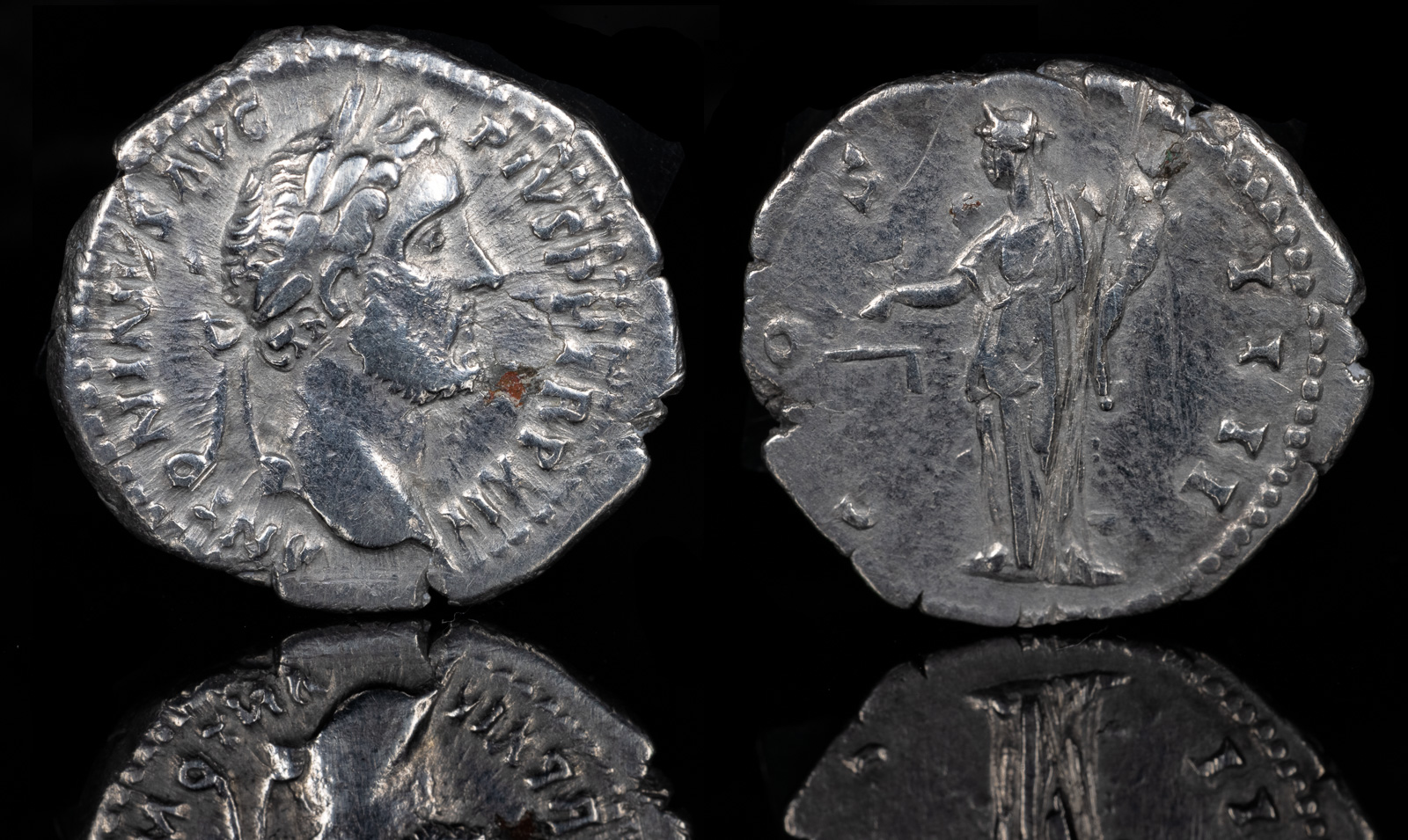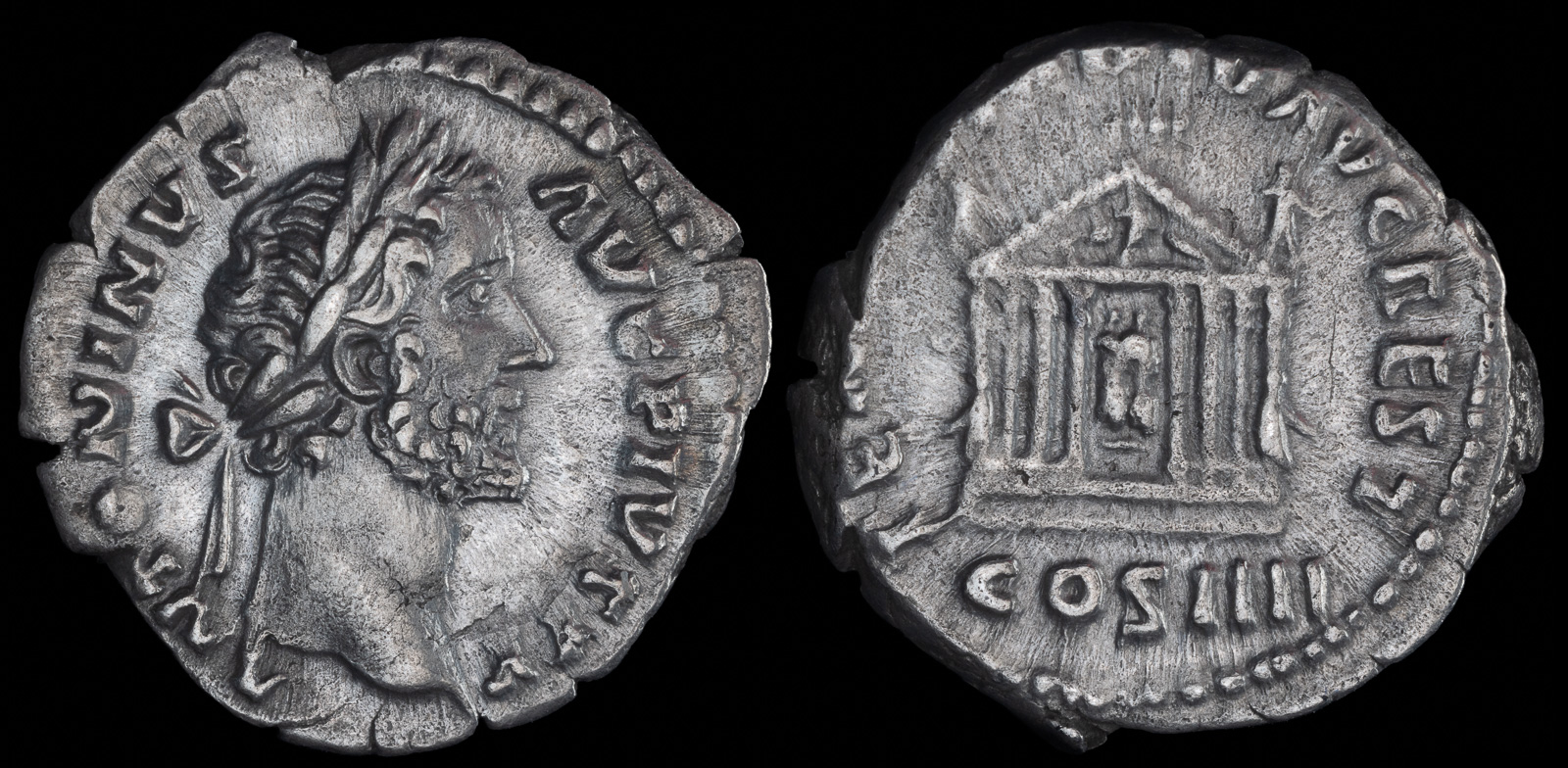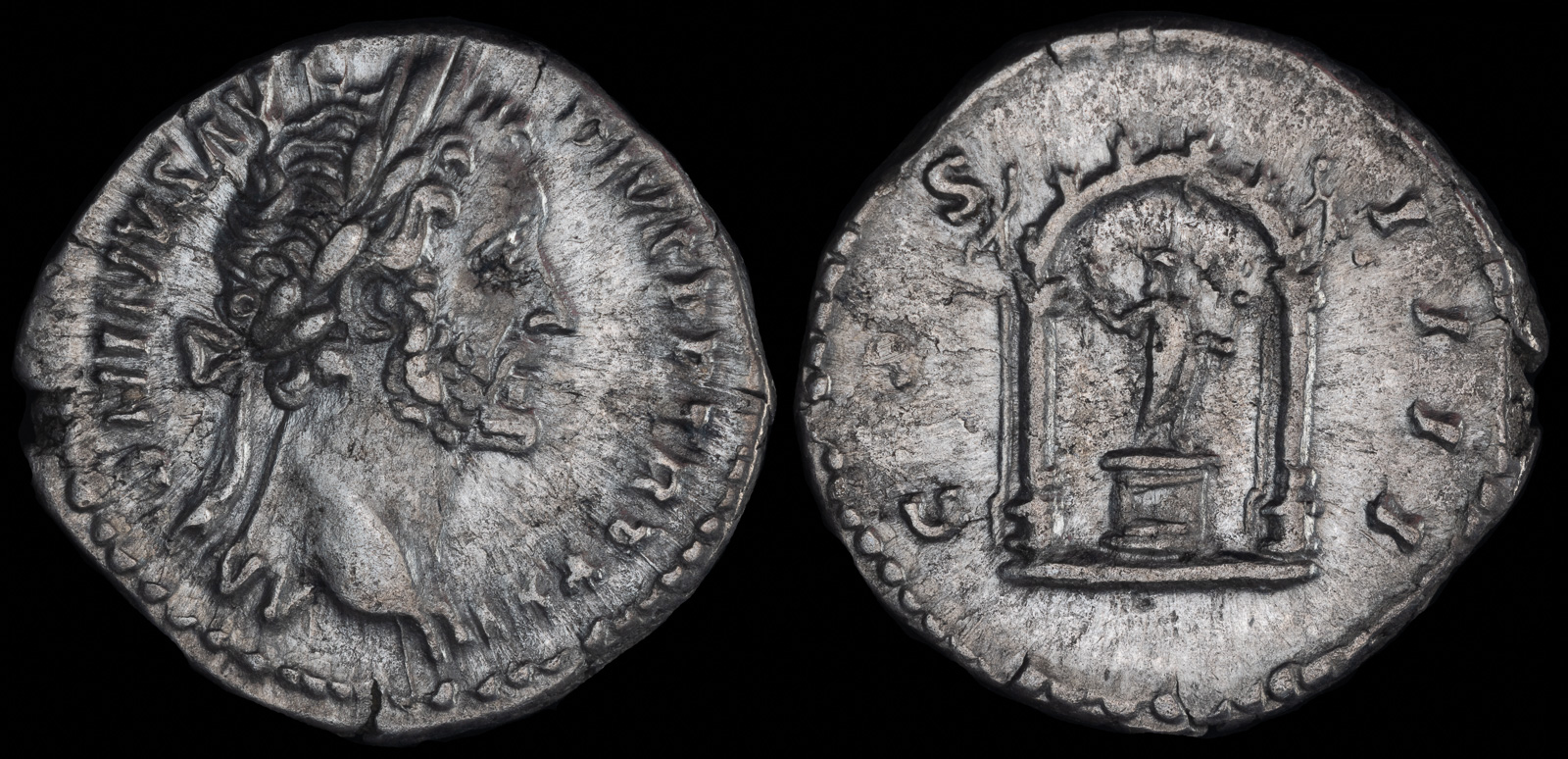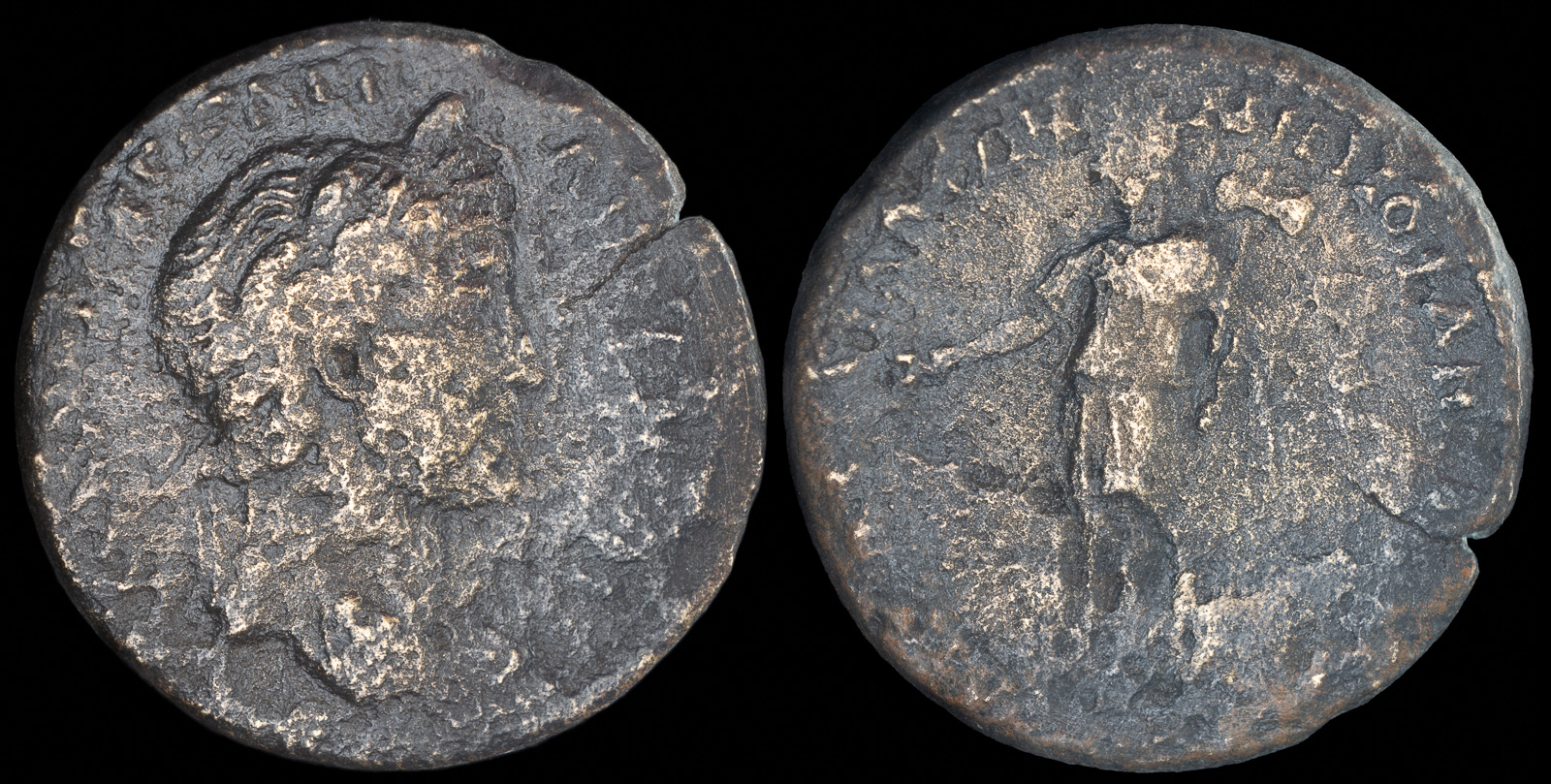
Antoninus Pius
Rome 138-161 CE
AR Denarius 20mm, 3,12g
ANTONINVS AVG PIVS P P TR P XIIII, laureate head right /
COS IIII, Felicitas standing facing, head left, with grounded caduceus in right hand and cornucopia in left
RIC 193

Antoninus Pius, 138-161 CE
Stuck 159 CE
AR Denarius 17mm, 3.19g, 6h
Laureate head r.
Rev. TEMPLVM DIV AVG REST Octastyle temple, within which are the seated figures of Divus Augustus and Livia. Temple surmounted by quadriga; figures in pediment; Victories on angles; statue on base in front of temple at each corner. In ex., COS IIII
RIC 290a. C 804
Ex Akropolis Coins

Antoninus Pius, 138-161 CE
Rome mint. Struck 158-159 CE
AR Denarius 18mm, 3.22g, 12h)
Obv: ANTONINVS AVG PIVS PP TR P XXII. Laureate head r
Rev: COS IIII. Figure standing l. on pedestal holding branch(?) and torch or short scepter, within distyle shrine with ornate semicircular roof; statues leaning outwards at corners.
RIC III 285; RSC 331. BMC 915
Ex Akropolis Coins

Lydia, Tabala
Antoninus Pius 138-161 CE
AE 26,8mm 10,9g
Obv: ΑΥT ΚΑΙ ΤΙ ΑΙ ΑΔΡΙ ΑΝΤΩΝΕΙΝοϹ; laureate head of Antoninus Pius, right
Rev: ΜΗΝοΦΑΝΤοϹ ΙΕΡΕΥϹ ΑΝΕΘΗΚΕ ΤΑΒΑΛΕΩΝ; Apollo-Tyrimnaios standing, left, wearing radiate crown, holding patera and double axe
RPC IV.2, 11013 (temporary)
September 19
Birth of Antoninus Pius to itus Aurelius Fulvus and Arria Fadilla.
Death of Titus Aurelius Fulvus, the father of Antoninus Pius.
The mother of Antoninus Pius marries Publius Julius Lupus.
Faustina marries Antoninus Pius.
Antoninus Pius is appointed as Proconsul of Asia.
Birth of Faustina the Younger to Faustina and Antoninus Pius.
The harbor of Soloi is renovated by Antoninus Pius.
Antoninus Pius is adopted by Emperor Hadrian, making him the designated successor after the death of Hadrian’s first choice, Aelius Caesar.
February 25
Faustina the Younger is engaged to Lucius Verus. This is later ended by her father Antoninus Pius when Hadrian changes his succession plans.
February 25
Antoninus Pius is adopted as Hadrian‘s new heir and subsequently adopts Lucius Verus and Marcus Aurelius as part of the arrangement.
July 10
Antoninus Pius grants Marcus Aurelius the title of Caesar, officially recognizing him as heir to the throne.
Antoninus Pius serves as Consul for the second time and oversees the construction of the Temple of Antoninus and Faustina in the Roman Forum, dedicated to his late wife, Faustina the Elder.
A major earthquake destroys Rhodes. Funds for is rebuilding are given by Antoninus Pius.
Marcus Aurelius serves as consul with Antoninus Pius.
October
Death of Faustina, making Antoninus Pius extremely distraught.
Antoninus Pius completes the construction of the Antonine Wall in Britannia, extending Roman control further north than the previous Hadrian’s Wall.
Antoninus Pius constructs and dedicates a temple to Faustina.
The marriage of Marcus Aurelius to Faustina the Younger, Antoninus’ daughter, solidifies the family ties and succession plan.
A series of minor conflicts break out on the empire’s frontiers, including unrest in Dacia and revolts in Egypt, but Antoninus manages these without major wars.
Antoninus celebrates the 900th anniversary of the founding of Rome, a significant event during his reign.
March 5
Antoninus Pius eats some alpine cheese at his estate in Lorium and vomits severely. He comes down with a fever thereafter and never recovers.
March 7
Antoninus Pius dies of illness at the age of 74 at his villa in Lorium, near Rome. He had reigned for 23 years, one of the longest and most stable reigns of any Roman emperor. He is succeeded jointly by Marcus Aurelius and Lucius Verus. Faustina the Younger becomes Empress.
Roman ambassadorial mission reaches China. It’s uncertain who sent it, but it may have been Antoninus Pius.